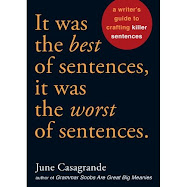A recent comment by the Reverend Jesse Jackson regarding the reverend's desire to express dissatisfaction with presidential candidate Sen. Barack Obama by severing certain of the senator's body parts has revealed the disturbing unreadiness of the nation's newspapers to deal with newsworthy vulgarities and issues of censorship.
For example, though the Los Angeles Times printed in full the reverend's comment, the New York Times euphemized the most anatomically illustrative and thus most objectionable portion of the comments. Papers in Kansas, I'm told, used no words at all and relied instead on crayon drawings depicting swords and figs. (Note: the accuracy of such accounts has not been verified.)
Clearly, our nation's newspapers find themselves at a critical point in history, facing the toughest question in their esteemed history: When, where, and in what context can one make reference to certain protein-rich kernels? Meetings in editorial boardrooms stretch into the wee hours as the nation's best news minds make keen observations such as, "... yet I'm very comfortable printing it when Rachael Ray says to put them in brownies."
This crisis threatens to grind our nation's newspapers to a halt. And I, for one, cannot just sit back and let that happen. So, in a patriotic and altruistic application of my language expertise as well as my experience as a newspaper editor, I have come up with a complex but foolproof formula for newspaper editors to discern the printability of any profanity.
I call it the Customary Usage Normalizing Test.
According to this system, all obscenities are assigned a number value based on their relative offensiveness. The higher the number, the less printable the word.
This variable, referred to as the Forensic Unambiguous Censorship Kurtosis, centers on two main variables:
Modifiers can increase a word's value -- a process referred to as Adjectival Shock Supremacy.1. a word's definition as pertinent to bodily elimination functions
(Septic-Highlighting Ingestion Terminology), which carries a base value of 72. pertinence to reproductive functions (Total Wantonness Algorithmic Table), which gives a word a base value of 8
Like the values of the base words themselves, Adjectival Shock Supremacy is measured in terms of relevance to elimination (added value of 1) or reproduction (added value of 2).
For example, Webster's word for "a stupid or silly blunder," that is, "boner," does not carry any offensiveness points when used thusly. But a homonym with an anatomical connotation would have a value of 8. A modifier with reproductive connotations, e.g. "raging," would increase that value to 10. While a waste-elimination-connoting modifier, e.g. "pee," would bring our root word to a less-objectionable 9. Other modifiers commonly considered to imbue obscene impact include "stiff," "wet," "bouncy," "hairy," "sucker," and "engorged."
As it is true that words spoken by such influential people as the president carry greater news value and thus greater justification for reprinting potentially objectionable quotations, newspapers should subtract a value of 2 from these leaders' words. This is called the President/Regent/Imperialist/Commander/King quotient.
The final variable factors in the sensitivity of any publication's readership. Community papers with extensive coverage of school, church, and family activities, for example, would use a different formula to assess acceptability in their publications than a national newspaper of record. Thus, all papers can assess each word's acceptability based on a simple rating system called Publication User-Specific Sensitivity Yoke.
Thus, "cock" (+8) modified by "engorged" (+2) spoken by the president (-2) could be printed in the Los Angeles Times, because that publication carries a PUSSY rating of 9, but not in the New York Times which carries a PUSSY rating of 7.
I sincerely hope our nation's newspaper editors will adopt this system.





6 comments:
:-D
I came across the normalizing test and thought, "no, she didn't." By the time I got to forensic disambiguating, I was sure that yes, you had. What's disturbing is that the adjectival quotient plays a part in both the forensic and septic functions.
In any case, nicely and boldly done. George would be proud (not the president/regent but, yaknow, the one that matters).
I'm tempted to start assessing the PUSSY rating of various social contexts, gatherings and groups of friends.
Thank you for commenting! I've been a bit on pins and needles waiting to see whether I would offend/alienate absolutely everyone.
So thanks!
You're quite welcome. And thank you--for reasons I probably shouldn't elaborate on (I actually have a 500 word comment I decided not to post), lest I make this all about me. In short, it turns out that your blog has become several kinds of catharsis for me. So now you're a healer. Who knew? :-)
Glad to hear it!
One time when I was a kid, I had a watermelon plant, but the stem leading to the only watermelon sort of broke (just halfway through). So I fashioned a splint out of a wet paper towel, kept it moist, and, a few weeks later, the break was fixed!
So I knew it was my destiny to become a healer and/or a maker of delicious summer fruit salads.
I love faux censorship. Have you noticed on radio that only the vowel sound of an obscenity is bleeped, leaving no doubt about exactly what was said?
I never thought of it that way, Will, but that is hilarious. I mean, what American 14-year-old is sitting there scratching his head saying, "Gee, I have no idea what f*ck means"?
Too funny.
Post a Comment